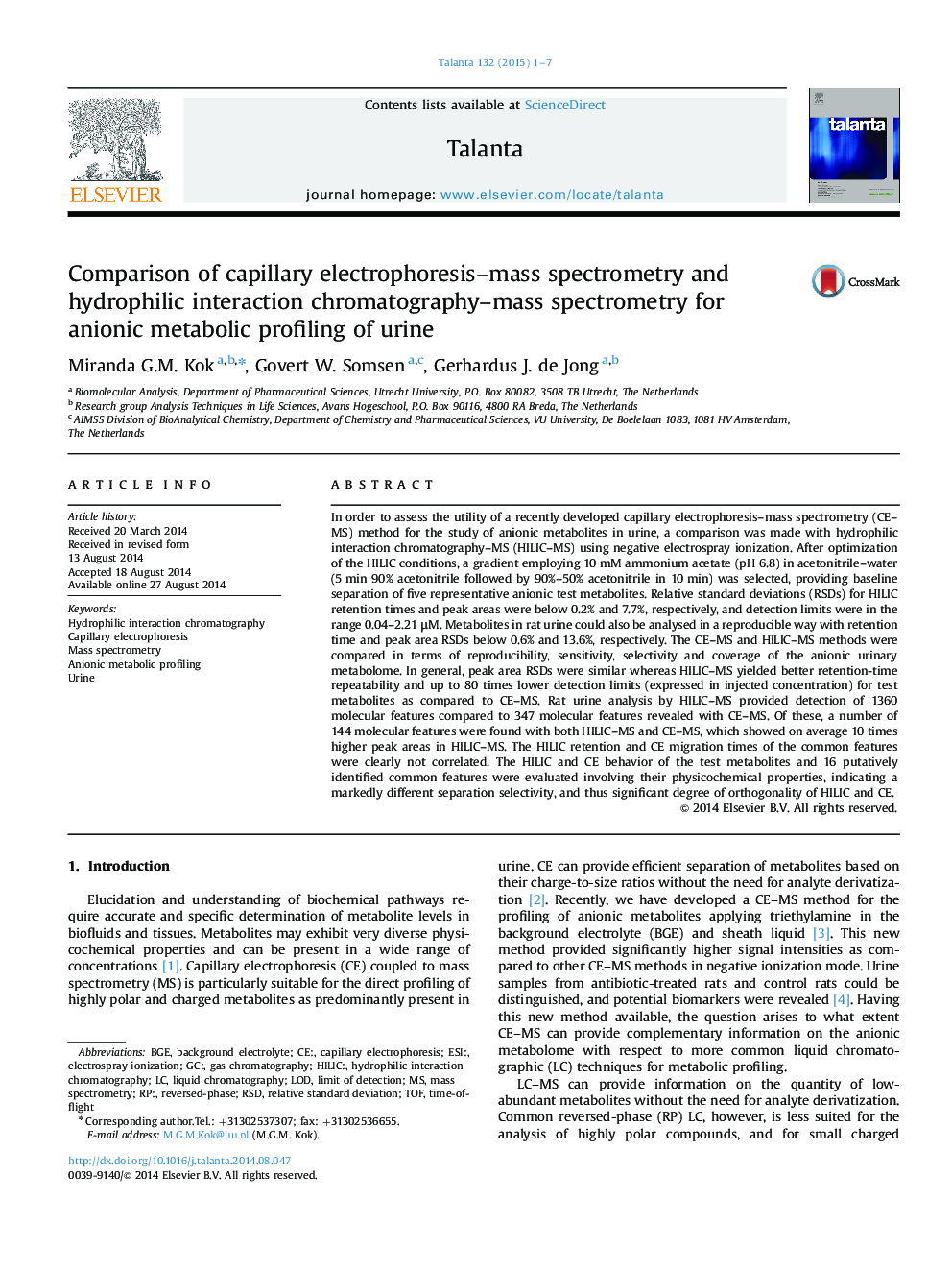| Article ID | Journal | Published Year | Pages | File Type |
|---|---|---|---|---|
| 1241980 | Talanta | 2015 | 7 Pages |
•CE–MS and HILIC–MS were compared for anionic metabolic profiling of rat urine.•1216 and 203 features were uniquely detected by HILIC–MS and CE–MS, respectively.•Common features showed on average 10 times higher peak areas in HILIC–MS than in CE–MS.•HILIC–MS and CE–MS exhibit a large degree of orthogonality.•CE–MS and HILIC–MS both significantly add to anionic metabolite coverage.
In order to assess the utility of a recently developed capillary electrophoresis–mass spectrometry (CE–MS) method for the study of anionic metabolites in urine, a comparison was made with hydrophilic interaction chromatography–MS (HILIC–MS) using negative electrospray ionization. After optimization of the HILIC conditions, a gradient employing 10 mM ammonium acetate (pH 6.8) in acetonitrile–water (5 min 90% acetonitrile followed by 90%–50% acetonitrile in 10 min) was selected, providing baseline separation of five representative anionic test metabolites. Relative standard deviations (RSDs) for HILIC retention times and peak areas were below 0.2% and 7.7%, respectively, and detection limits were in the range 0.04–2.21 μM. Metabolites in rat urine could also be analysed in a reproducible way with retention time and peak area RSDs below 0.6% and 13.6%, respectively. The CE–MS and HILIC–MS methods were compared in terms of reproducibility, sensitivity, selectivity and coverage of the anionic urinary metabolome. In general, peak area RSDs were similar whereas HILIC–MS yielded better retention-time repeatability and up to 80 times lower detection limits (expressed in injected concentration) for test metabolites as compared to CE–MS. Rat urine analysis by HILIC–MS provided detection of 1360 molecular features compared to 347 molecular features revealed with CE–MS. Of these, a number of 144 molecular features were found with both HILIC–MS and CE–MS, which showed on average 10 times higher peak areas in HILIC–MS. The HILIC retention and CE migration times of the common features were clearly not correlated. The HILIC and CE behavior of the test metabolites and 16 putatively identified common features were evaluated involving their physicochemical properties, indicating a markedly different separation selectivity, and thus significant degree of orthogonality of HILIC and CE.
Graphical abstractFigure optionsDownload full-size imageDownload as PowerPoint slide
